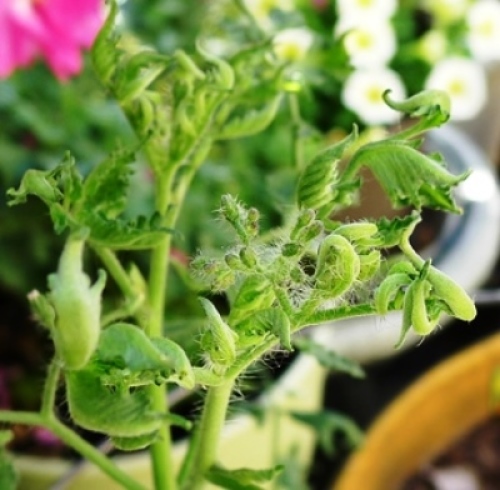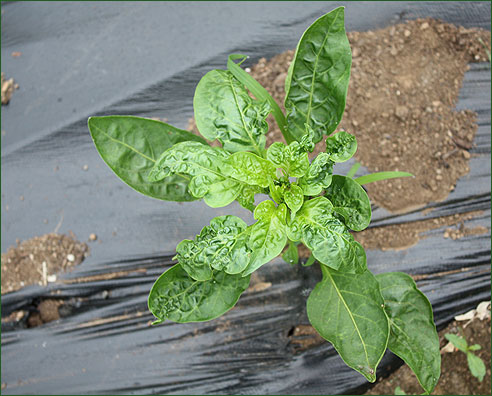Herbicide Carryover in Composted Manure
2022-09-22 14:02:06
Herbicide Carryover in Composted Manure
Know your poop when you use manure as a soil-building fertility option in garden environments.
Patrick Mangan - MSU Extension Missoula County
The heat of August and the plentiful harvest coming out of our vegetable gardens are a telltale signal that our gardens are just getting into a rhythm and producing an abundance of squash, greens, and other delights. It is also a sign that the first fall frost is not far around the corner. Such is the life and challenges of gardening in Montana; takes us a long time to get started in the spring and frost threatens to end it all before we know it.
The autumn, after we have harvested our last veggies, is a great time to think about building long-term soil health through the incorporation of organic matter and other soil-building options. Composted manures can be a great source of nutrients and organic matter for our garden soils and many gardeners utilize manures as the go-to additive for soil amendments.
There are some risks associated with using manures as a garden soil amendment. Over the years we have seen more and more herbicide carryover in garden soils as a result of using manures as a source of fertility. It’s best to do some investigation into the manure you are considering incorporating into your garden soils before bringing that pickup load to your garden. It might be a free source of soil-building fertility, but it can also cause you plenty of headaches in future years if you import a tag-along residual herbicide as part of the load. My suggestion is to spend a little time getting to know the poop you are about to put in your garden.
There are several herbicides that are labeled and can be used on hay crops to control weedy broadleaf species. These are great tools that farmers use to combat weedy species and mitigate the risk of transporting weed seeds through hay bales to other places, for both hay growers and livestock owners. Federal land management agencies like the US Forest Service and US Park Service even require the use of certified weed seed-free forage and hay while horses are on those public lands. Some of the herbicides labeled for use on hay fields can persist in the soil for a long time, continuing to provide weed control in the fields after the initial application. These can be powerful tools to help farmers and land managers target and control broadleaf weedy species in grass communities.
The challenge for gardeners comes through a chain of unintended custody of these herbicides and the long-term persisting residuals. Grasses are not typically injured by these herbicides but will take them up into the above-ground parts of the grass plant with soil water and nutrients throughout the growing season. When grasses are cut for hay, an active herbicide can travel in the hay to the feed bunk for livestock to consume. These herbicides do not impact the livestock but pass through their digestive system and out the other end in the manure, where it can still be active as an herbicide.
We get into a bind when we as gardeners introduce manures into our garden environment that carry active herbicide residuals in that manure. When incorporated into our garden soils, the residual herbicide can target our garden vegetables in future years, treating them like broadleaf weeds.
When we get manures contaminated with herbicide residuals in our gardens it can affect the growth of our vegetable plants. Leaves of susceptible plants can cup upward or be twisted and distorted in a spiral growth that we call epinasty. The plants will typically be stunted, not produce, and can die. 
There are some simple ways to protect ourselves from the unintended incorporation of herbicide residuals into our garden environments through manures. First off, get to know your poop, and get to know the farmer behind the poop if that is at all possible. Do not necessarily take that free composted manure from your friend and think you have hit the motherlode, ask some questions about what the manure supplier knows about the hay ground, how it is managed, and if there have been any herbicides used to treat the hay. Steer away from any manures that have lingering questions until you can do more investigation.
Often the gardener is so disconnected from the hay grower that we will not know who the farmer is, or how the hay was grown. In this case, you can run a simple at-home test, called a bioassay to see if you can identify any physical symptoms of plant growth consistent with herbicide damage. Mix a sample of the composted manure you are interested in using with some garden soil and put it in some small planting pots. Plant some bean or pea seeds into the soil and let them germinate. Plant a couple of control pots without manure for comparison as well.
Bean and pea seedlings are susceptible to herbicide residuals when they grow. If seedlings germinate, but quickly begin to twist, curl, and have thick waxy growth that is different than the control seedlings, then that can be a physical sign of potential herbicide residuals in the compost. If you see signs of the epinasty in the test pots, it might be best to steer clear of that manure source to build garden soil fertility.
This MSU Extension publication “Understanding Herbicide Contaminated Soil Amendments” can help you learn more about the issue and has direction on how to set up a bio-assay for testing potential soil amendments. https://store.msuextension.org/publications/AgandNaturalResources/4628.pdf
